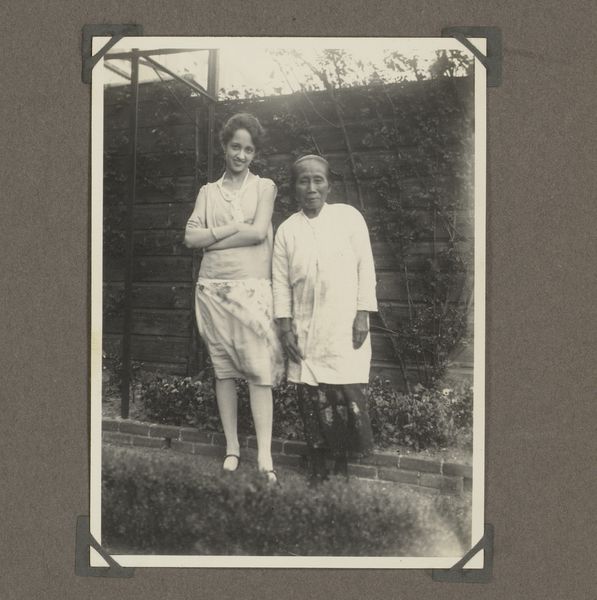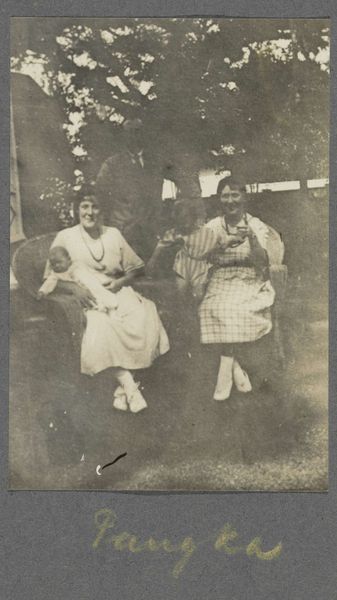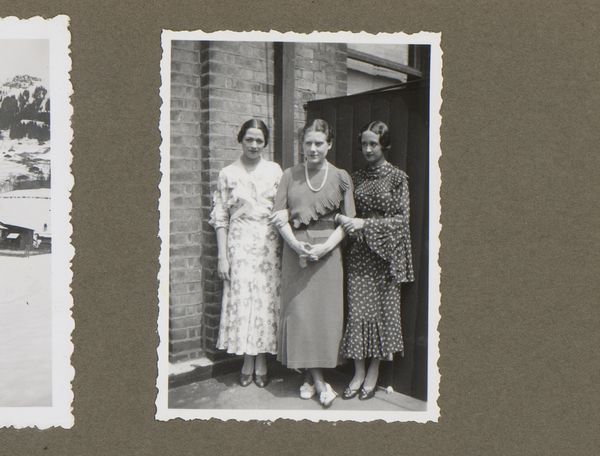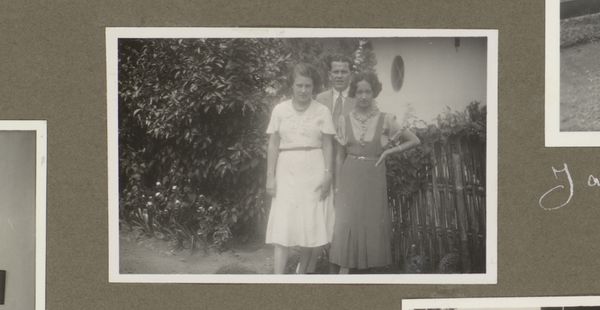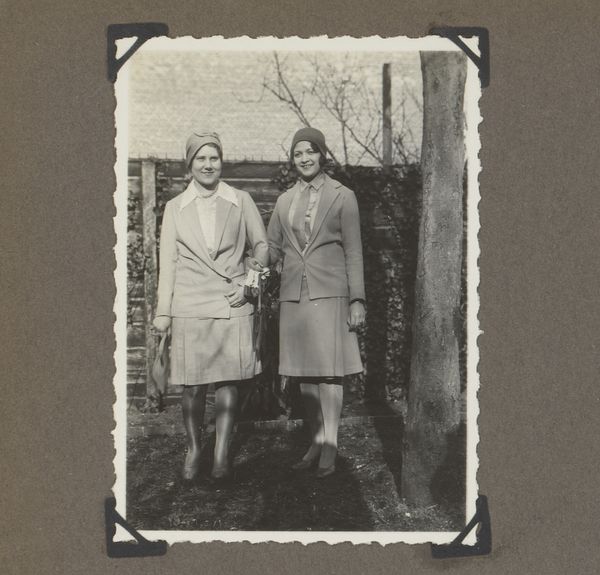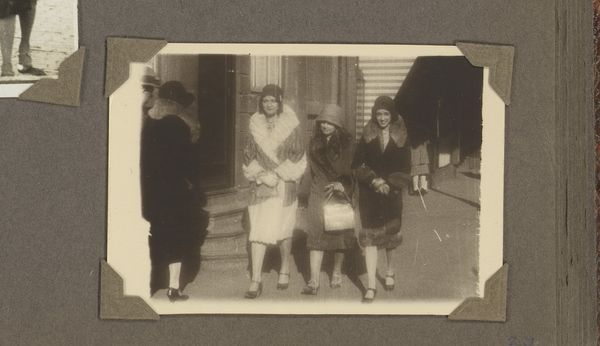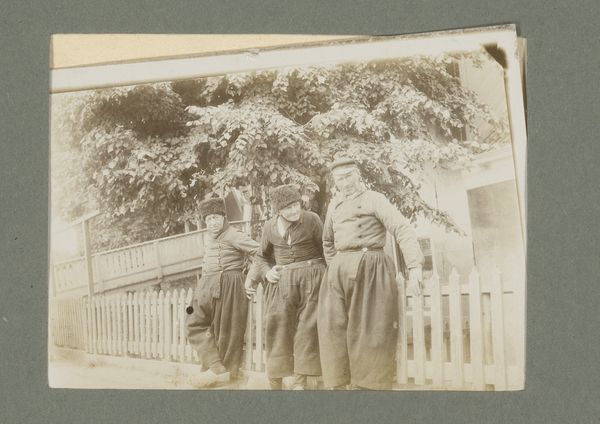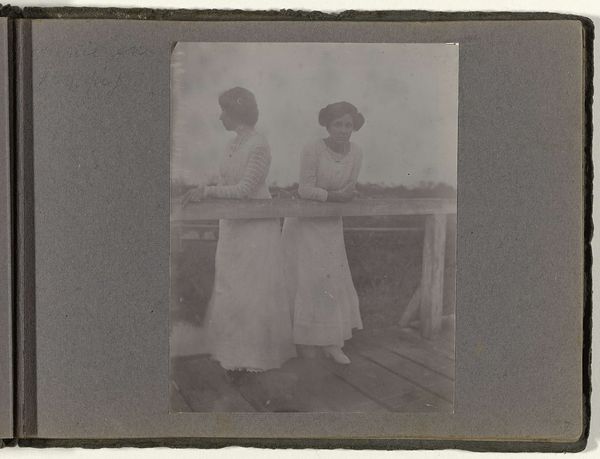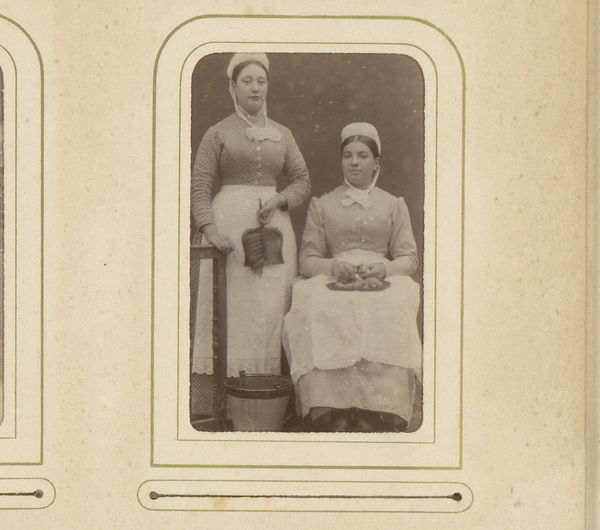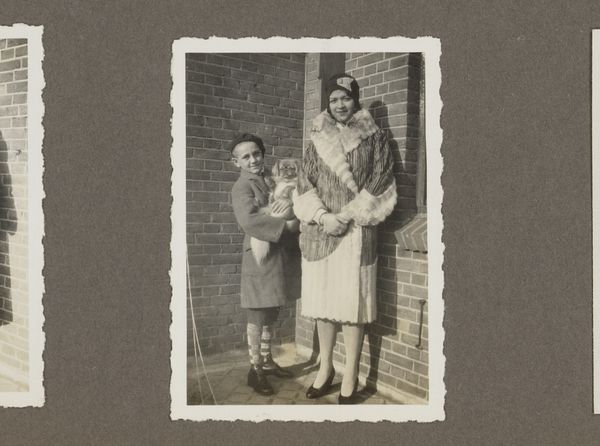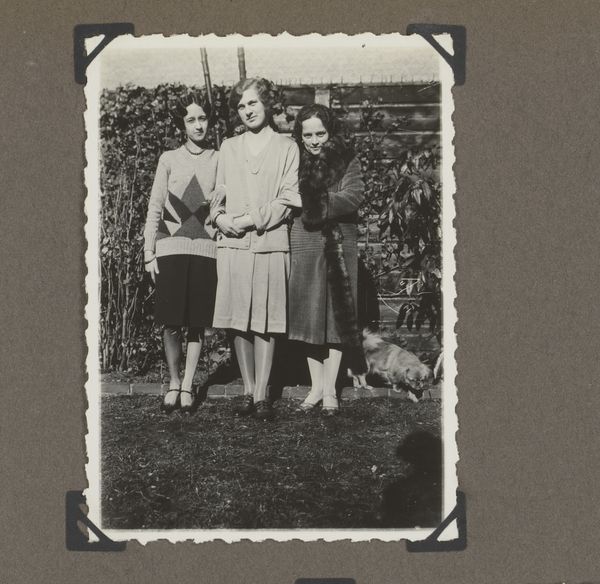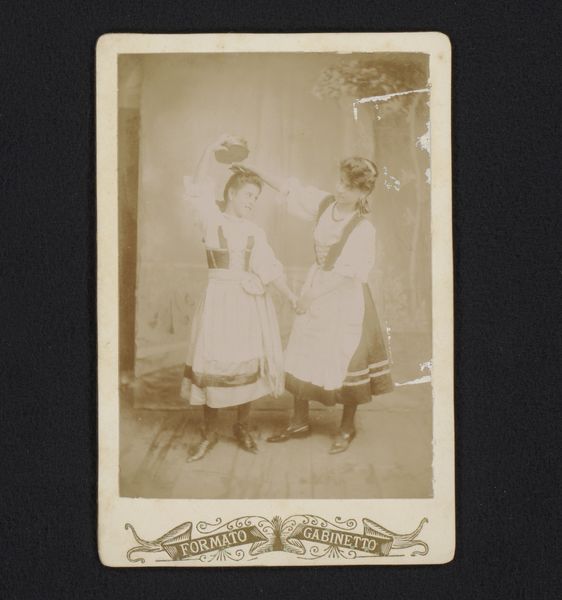
photography
#
portrait
#
photography
#
historical fashion
#
group-portraits
#
realism
Dimensions: height 85 mm, width 60 mm
Copyright: Rijks Museum: Open Domain
Curator: What a striking image. Here we see "Drie Verpleegsters"—"Three Nurses"—a photograph, likely taken between 1943 and 1945, by an unknown photographer. It is part of the collection at the Rijksmuseum. Editor: It is quite simple but hauntingly serene. They appear almost joyful, yet the grayscale tones hint at a certain somberness. Curator: Indeed. Knowing the probable time frame of its creation, we can infer this photograph documents the experiences of women during wartime. It prompts questions about women in healthcare during WWII. The photograph becomes a poignant commentary on gendered labor and national identity during times of crisis. Editor: Yes, absolutely. There’s something subtly defiant in their posture, despite the rigid uniforms. I am curious to know how the socio-political environment may have influenced them as women but also how it shaped healthcare itself. Curator: Consider also how photography functions here, both as a tool for documenting the social realities of war, but also as a powerful form of visual propaganda. How could images like these have impacted Dutch morale, particularly in the context of Nazi occupation? Editor: That’s a compelling angle. Their neatly pressed uniforms could symbolize resilience, projecting an image of order amid chaos. Curator: I agree, this image resists easy categorization. It occupies this fascinating liminal space between official documentation and an almost tender group portrait, telling so many potential untold stories about labor, healthcare and gender identity at a particularly significant period in Dutch history. Editor: Definitely. It underscores the intersectional narratives present, pushing us to examine the past with a more critical and discerning lens.
Comments
No comments
Be the first to comment and join the conversation on the ultimate creative platform.
